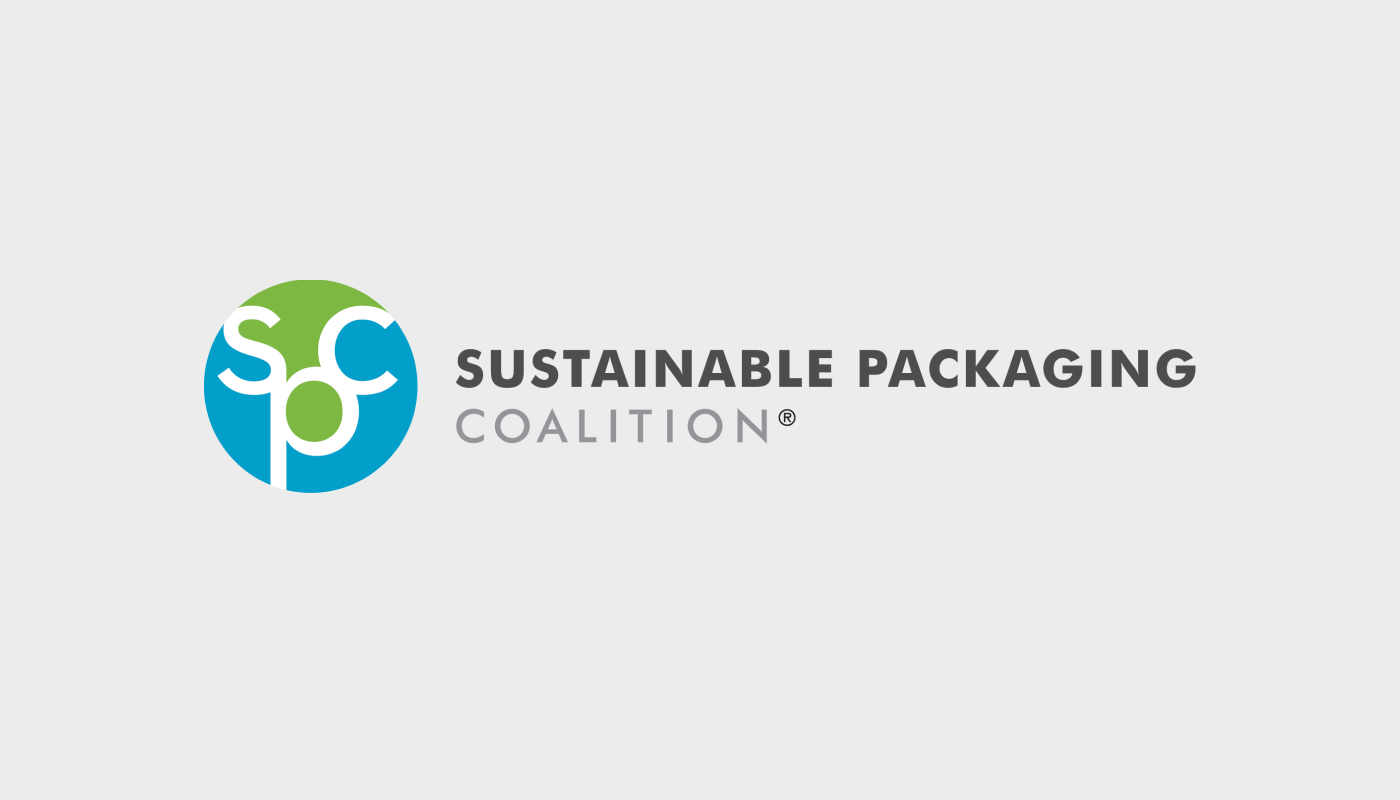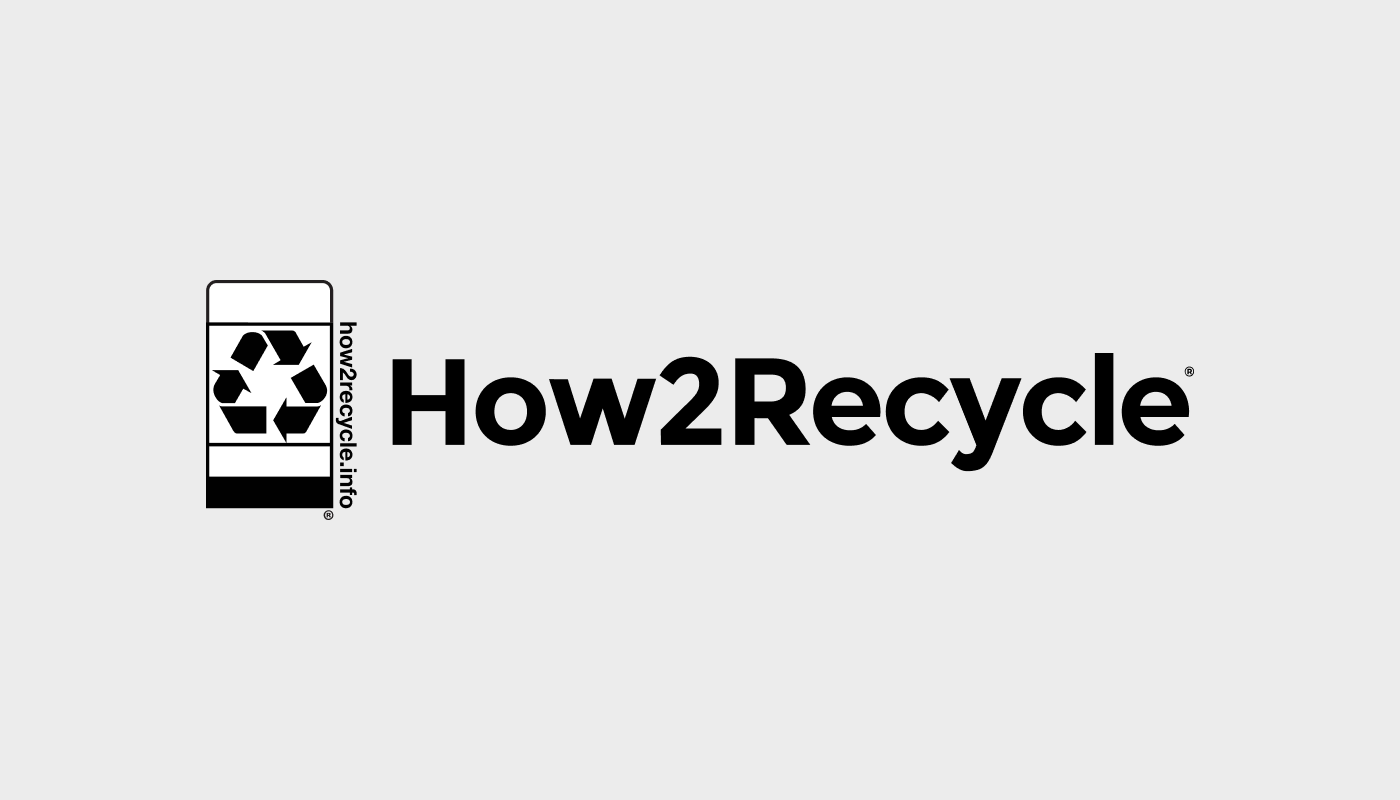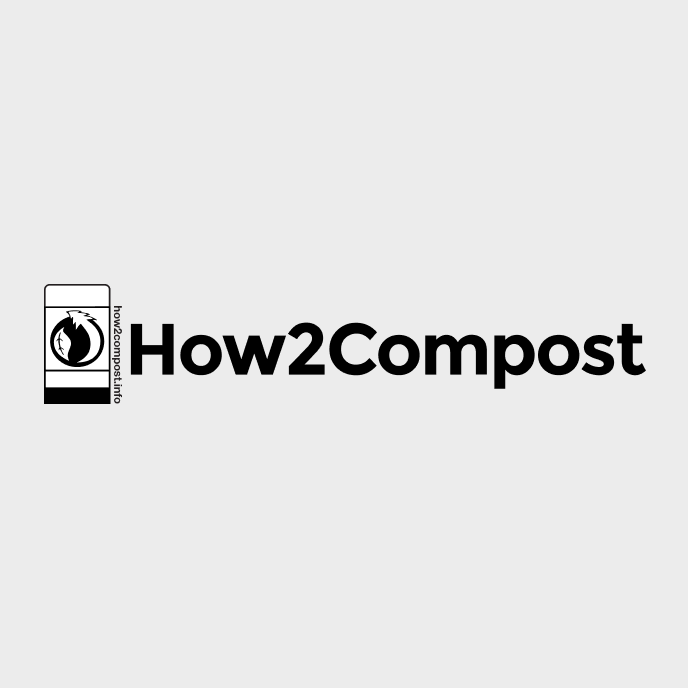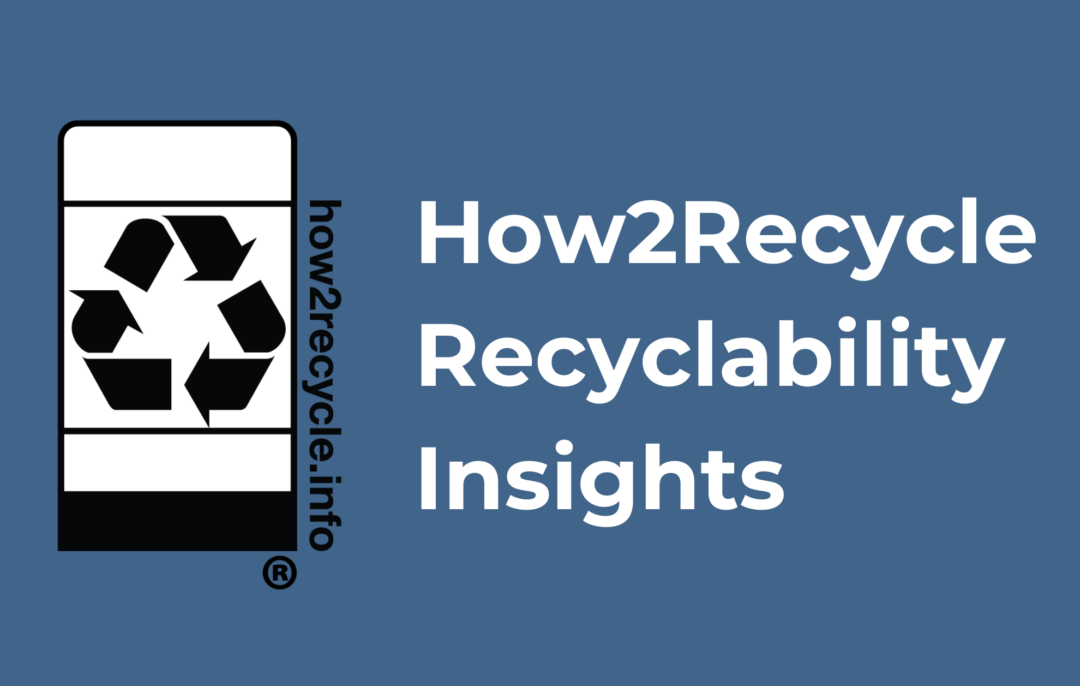This How2Recycle Recyclability Insights report provides a macro view of the recyclability of packaging today for the benefit of How2Recycle member companies and the general public.
No other nonprofit organization in North America has as much comprehensive data on the recyclability of packaging in the consumer packaged goods (CPG) space than the How2Recycle program. This How2Recycle Recyclability Insights report provides a macro view of the recyclability of packaging today for the benefit of How2Recycle member companies and the general public. Additionally, this report explores the nature of the How2Recycle program’s influence on packaging design, and includes high-level recommendations to the packaging industry about which interventions on packaging design might be the most impactful.
The insights from the How2Recycle member packaging portfolio paint a fascinating story about the present and future of packaging recyclability in the United States and Canada, as well as the impact of the How2Recycle program on packaging design.
Recyclability is only one aspect of sustainable packaging, but an important one. Many companies have public goals to increase the recyclability of their packaging: in the SPC Goals Database, over 56% of companies have goals to make their packaging more recyclable, compostable, and reusable.
Every day, brands and packaging producers submit detailed packaging specifications to How2Recycle, and the program assesses the recyclability of each packaging type and issues specific recommendations for design improvement.
Key findings show that 44% of the packaging that How2Recycle member companies have submitted for the program’s review is currently recyclable. The vast majority of recommendations that How2Recycle provides to its members to make their packaging more recyclable are relatively low-hanging fruit—easy to implement. Two-thirds of recommendations relate to plastic packaging, and the vast majority of the remaining recommendations are issued for paper packaging. How2Recycle has directly influenced at least 6% of its members’ packaging to become more recyclable through recommendations for packaging design changes.
The scale and complexity of the How2Recycle member packaging portfolio
The How2Recycle program counts over 225 brandowners and retailers as members. To date, How2Recycle has issued labels to over 75,000 products in the Member Platform, reflecting around 25,000 different packaging designs. For those different packaging designs, How2Recycle has issued over 3,500 custom How2Recycle labels—which represents not only the massive diversity of packaging design in the marketplace but also the complexity of certain package designs. On average, How2Recycle issues labels for 225 products every day.
As of mid-2019, How2Recycle member companies represent 34% of the CPG industry, as measured by North American annual sales revenue of $680 billion. To avoid any potential ‘double counting’, this figure does not include retailer member companies. Accordingly, the insights in this report reflect a snapshot of the landscape of packaging recyclability in North America, and will increase in accuracy over time. As the How2Recycle program grows (the number of brandowner and retailer members grew by 74% in 2019), the figures in this report will become more and more representative of the packaging marketplace at large.
Not only will the figures become more representative over time, but it’s also possible the overall recyclability of the packaging assessed by the program will shift as more diverse products are assigned How2Recycle labels. Some product categories generally have more or less recyclable packaging than others; take electronics packaging as an example—much of that paper packaging has plastic coatings, rendering it less recyclable, so when more of those companies join the program, that could shift the overall recyclability of member packaging. Additionally, the rise in popularity of retailers in the How2Recycle program (35% growth over 2019) will also influence the recyclability of the member packaging portfolio, since private label products tend to fall more heavily in grocery product categories, favoring certain packaging formats.
The current breakdown of product categories represented in How2Recycle membership show a higher proportion of brands with higher volume, faster moving product categories like food, beverage, health and personal care. This is no surprise, as companies in these categories were the earliest adopters of the How2Recycle label by virtue of their participation in the Sustainable Packaging Coalition, and also face the most scrutiny from consumers about packaging recyclability.
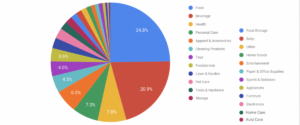
How2Recycle labels can be applied to any packaging format or material (even non-recyclable packaging, since the program does tell consumers when an item should not go in the recycling bin), so How2Recycle holds data across all material types. Every How2Recycle label calls out the recyclability of each main packaging component, so consumers are empowered to know what to do with the full package. Plastic packaging constitutes a significant portion of the member packaging portfolio. Specifically, 47.9% of the packaging components that have been issued How2Recycle labels are for plastic, whereas 43% are for paper, 2.3% are for metal, and 1.5% are glass (with 5.3% other).
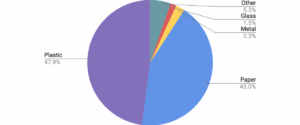
In terms of packaging format, about half of How2Recycle member packaging components are flexible (like bags, wraps, pouches, wrappers, etc):
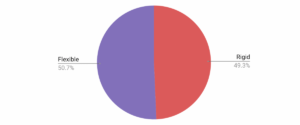
Looking at only rigid plastic packaging, the types of plastics used by members include polyethylene terephthalate (PET), high-density polyethylene (HDPE), low-density polyethylene (LDPE), polyvinyl chloride (PVC), polypropylene (PP), rigid polystyrene (PS), and other (expanded polystyrene (EPS), multi-material plastics or other). Accordingly, this is the breakdown of types of plastics by number of packaging components (not by weight):
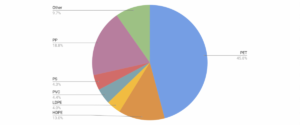
The data in this report only reflects a subset of the packaging portfolio of member companies. That’s because the How2Recycle program is voluntary, so the brands and retailers in the program choose what items feature the How2Recycle label. Many members place the How2Recycle label on all products and have public goals to do so, but not all do. Accordingly, this data is reflective of the packages for which companies have requested How2Recycle labels.
How2Recycle member companies collectively own over 2,600 brands. However, the program estimates that around only 15% of those brands that are licensed to use the How2Recycle label currently do. Typically, companies add the How2Recycle label to packaging whenever it’s “up for redesign,” so this organic growth is unsurprising. Still, this suggests that despite the vast number of packages the label is already on, there is significant room for labeling improvement (and thus packaging design insights) just in the current membership.
Additionally, this data does not take into account the volume of packages in the marketplace. How2Recycle does not hold members’ sales data.
The overall recyclability of the How2Recycle member packaging portfolio
Overall, How2Recycle members are making progress towards recyclability goals but still have a ways to go. As of April 2020, only 18% of the How2Recycle member packaging portfolio is optimally designed for recycling. Optimally designed means the package meets recyclers’ best-in-class criteria for packaging design.
An additional 26% of packaging is classified as recyclable, but needing design improvement. An example would be a clear polyethylene terephthalate (PET) bottle with a pressure sensitive label with detrimental label substrates, adhesives or inks. Together, these categories suggest that 44% of How2Recycle member packaging is currently recyclable.

The remaining 57% of the How2Recycle member packaging portfolio is partially recyclable, or not yet recyclable. These are packages where at least one main packaging component features the Check Locally or Not Yet Recyclable label. You can read a more detailed description of these color categories here.
However, since How2Recycle members voluntarily submit packaging information, and a certain subset of the membership shies away from requesting labels for packaging they believe will receive the Not Yet Recyclable label, the amount of nonrecyclable packaging in the overall How2Recycle member portfolio is likely higher.
How2Recycle’s impact on the recyclability of packaging in North America
How2Recycle has issued over 100,000 recommendations for how brands should make their packaging more recyclable. As a direct result of these recommendations, more than 2,000 packaging designs have changed to become more recyclable. This number is conservative: it comes from members voluntarily checking a box to indicate that a design has changed based on How2Recycle feedback during their process of requesting a new How2Recycle label.
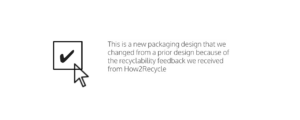
Because of How2Recycle’s broader design guidance to members through other channels like the Guidelines for Use, the Guide to Recyclability, and How2Recycle-related programming through SPC events, and because this number only reflects design changes since 2017 (How2Recycle began in 2012)—How2Recycle’s influence on package design is likely much larger. Even still, with these figures, since 2017, How2Recycle has analyzed over 25,000 package designs, which suggests that How2Recycle is currently directly influencing at least 6% of packaging.
| Interesting How2Recycle insight: Based on numbers in the How2Recycle Member Platform, companies seem to use the same package design for approximately 3 products, and approximately 7 package designs ultimately ‘share’ the same How2Recycle label. |
Note that these numbers do not include packages that How2Recycle has analyzed that are currently in research & development for potential inclusion in the marketplace. Members submit these designs to How2Recycle to see what recyclability label would apply and if and how the design could become more recyclable. Those insights directly feed into brands’ decision making about whether to use that package design. How2Recycle has analyzed 1,470 of such packages to date.
Design recommendations for How2Recycle member packaging
The average number of design recommendations issued to How2Recycle members per package is 1.5. Many packages are issued more than one recommendation, and others are not issued any recommendations at all (those that receive the dark green optimally recyclable designation).
Looking at the over 100,000 recommendations for design improvement that have been issued to members, two-thirds apply to plastic packaging and most of the remainder applies to paper packaging or all packaging:
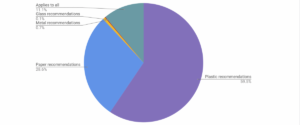
The most common recommendation that applies to all package types, regardless of material, is:
Move to all one material so that the consumer does not need to separate components for recycling.
This recommendation (above purple) has been issued around 12,000 times and is a core principle of designing packaging for recyclability, applied to 11% of all member packaging. It is better to use one material in a package design, even if there are multiple components, than using more than one material, because it requires consumers to separate components in order for the package to get recycled properly. Most often this applies to blister packaging, “bag in box” configurations, complex food packaging, toy packaging, and electronics packaging.
Plastic packaging on average receives 1.86 recommendations per package, whereas paper packaging on average receives 1.51 recommendations per package. This suggests that all packaging types have room for improvement when it comes to recyclability. It also could possibly suggest one or all of the following: plastic packaging design may be more complex than for other materials; that the plastic recycling process may be more complex or less forgiving than other materials’ recycling processes, and/or that plastic packaging has more sophisticated industry design guidance available to improve it.
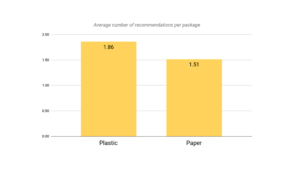
This graph does not visualize the average number of recommendations for glass packaging (0.34) and metal packaging (0.99) because together, those constitute less than 1% of all recommendations issued.
Insights on design recommendations for plastic packaging
These are the most popular design improvement recommendations issued for plastics, in order:
- Change to film that qualifies for the Store Drop-Off label
- Change to mono-material from multi-material
- (For PET, PE, or PP containers) Ensure label substrate, label adhesive, and label ink meet criteria for Preferred per the APR Design® Guide
- (For PET thermoforms) Change to label that meets criteria for Preferred per the APR Design® Guide
- Change to a Widely Recyclable material
The first recommendation—change to film that qualifies for the Store Drop-Off label—is the most popular design recommendation across all materials, all time. It is also no surprise: the marketplace is experiencing an unprecedented explosion in flexible packaging, most of which is not recyclable. Store Drop-Off is the only recycling option for flexible packaging at scale, and is only available to polyethylene packaging.
For context, here is a snapshot of the overall recyclability of members’ flexible packaging; while about 36% receives the Store Drop-Off label, the remaining 64% is Not Yet Recyclable:

However, the ability of the Store Drop-off stream to alleviate the packaging industry’s end-of-life challenges with flexible packaging will be likely limited long term. Like all recycling streams, market volatility in the global commodities context is a challenge. But for Store Drop-off in particular, the demand for the material, its current recycling rates, and the challenges inherent in Store Drop-off collection (consumer convenience, reliance on retailer participation), along with the enormous volumes of flexible packaging that are being produced, suggest that its potential long term success for all or most flexible packaging is insufficient to meet recovery needs. Accordingly, How2Recycle recommends that brands, packaging producers and resin manufacturers critically analyze what wide-reaching collection, sortation, reprocessing and market mechanisms and investments are required to scale recyclability of flexible packaging for the far future. See the How2Recycle Guide to Future Recyclability and How2Recycle’s report on Future of Store Drop-Off Recyclability for more insight.
Related to this, How2Recycle’s second most common recommendation for plastics—change to mono-material from multi-materials—is an important step in design for recyclability for flexible packaging, even aside from the state of the current Store Drop Off stream. That’s because any future recycling technologies like chemical recycling are likely to favor or require substrates made of one material. Industry work is needed to explore far future design for recyclability further. Note that this recommendation also applies to rigid plastics, where multiple materials are sometimes used to create certain performance characteristics.
Labels on plastic packaging are a big area of potential improvement as well—changing to less detrimental label substrates, adhesives and inks to make those packages overall more recyclable occupy both the third and fourth most frequent design recommendations. Especially for PET packaging, this is a critical step towards more recyclable packaging.
The fifth most popular recommendation is changing to a Widely Recyclable type of packaging, which means packages where more than 60% of Americans or 50% of Canadians have access to recycling programs where they live for that package, and the package is also successfully sorted, reprocessed, and sold to become a new item. (See the How2Recycle Guide to Recyclability for more detail about the definition of recyclability and what qualifies for Widely Recyclable.) This recommendation is issued to companies with packages that receive the Check Locally or Not Yet Recyclable label. Some companies are actively working towards increasing the collection and end markets of materials in those categories, and other companies are switching to different materials in the Widely Recyclable categories.
Given the insights from How2Recycle about its member packaging, these are the key takeaways for plastic packaging:
- Flexible packaging is far and away the biggest and most challenging recyclability challenge facing brands. This is almost half the entire challenge. While some product categories can be very easily changed to Store Drop-Off packaging today, others, such as those containing wet and sticky products or those requiring a high performance barrier, require recycling system interventions. Interventions may include new or different collection mechanisms for reprocessing technologies like chemical recycling. See the “Considerations for far future recyclability” section of the How2Recycle Guide to Future Recyclability for more detail. Additionally, How2Recycle’s report on Future of Store Drop-Off Recyclability illuminates design considerations for flexible polyethylene packaging.
- Recyclers have already identified what design interventions are required to make more recyclable packaging, and most of those are already ‘easy’ to do. New industry research or work is not required to identify common design problems, their prevalence in the marketplace, and how solutions could be prioritized to reach change at scale. That information is included in this report, and is already provided to How2Recycle members on a package-by-package basis. That information is based on feedback and research from recyclers, including the pioneering and impactful guidance in the APR Design® Guide for Plastics Recyclability. While design innovation may help improve the recyclability of a select variety of package types, infrastructure interventions are likely more important—and required for some materials if companies wish to continue using them and consider them recyclable. See the How2Recycle Guide to Future Recyclability for more detail.
- Recommendations for rigid plastics design in particular are very straightforward, low-hanging fruit. Rigid plastic packaging has on average 2.1 design recommendations issued per package in the How2Recycle Member Platform. Commercialized, recyclable innovations already exist for the majority of design concerns for rigid plastics, and it’s just a matter of the brand making the change (like labels, closures). See the APR Champions for Change Program for lists of innovations by companies already rising to the challenge.
- PET thermoforms’ design challenges are (a) eliminating the need for consumer separation (e.g. blister packaging), and (b) using labels that meet criteria for Preferred per the APR Design Guide. PET thermoforms are used for a wide variety of packaging such as toy packaging, produce clamshells, and blister packaging. Design for recyclability solutions already exist: see the ‘labels’ tab in the list of recipients in the APR Champions for Change Program. Additionally, investment is required at scale to increase the end market demand and availability of recycling for these items.
- Less than 5% of the recommendations issued apply to PVC, and to lesser extent PS and EPS. Some industry conversations focus on the desire to eliminate challenged plastics such as PVC, PS and EPS. However, How2Recycle data suggests these materials do not constitute an appreciable portion of the member packaging portfolio.
How2Recycle recommendations for collective voluntary commitments aimed at increasing recyclability of plastic packaging
There are several collective voluntary commitments such as the New Plastics Economy Global Commitment that include an emphasis on making packaging more reusable, recyclable or compostable, with a special focus on plastics. How2Recycle recommends that projects like those in the United States and Canada may want to keep in mind that:
- Industry resources should be allocated in proportion to the size and complexity of design for recyclability issues. Not all recyclability challenges are as widespread or as difficult to overcome. In contrast, a strategy that places equal priority and focus on all plastics or all design issues could create a false sense of equivalency.
- Many design for recyclability issues are less about the type of plastic selected for the package and more about the product category or the overall design of the package. Thinking about “improving recyclability of HDPE packaging” in isolation is less effective than say, “overcoming detrimental characteristics of closures,” or “reducing the need for consumer separation to recycle properly” or“packaging liquids in recyclable packaging.” Stated differently, some plastics have the same or similar challenges so organizing by mere resin may be overly simplistic and overly complicated at the same time. It also mistakenly dictates material selection as the most appropriate first step in packaging design.
- Keep in mind the difference between ‘easy’ work (using better labels for PET—solutions already exist) and ‘harder’ work (improving future fate of multimaterial flexible packaging). Both types of work should be pursued concurrently.
- Note that design for recyclability overlaps with other sustainable packaging pursuits, such as eliminating problematic packaging, increasing recycled content and improving recycling, so a systems-based approach to workflows (as opposed to segmented or parallel) is more appropriate.
- Recognize there are potential unintended consequences when companies replace plastic with an alternative material. Plastic historically could ‘do more’ than other substrates, so as other materials seek to meet the performance attributes of plastic with new innovation, there is a bit of Wild West effect starting to occur. For example, the dramatic, recent push for innovation in fiber packaging will potentially impact or materially change the recycled paper stream. It’s important for industry to ensure that these packages are developed with an understanding of how to design for recycling from the start, and that other critical packaging sustainability issues like carbon footprint are still kept in mind. Given this trend, How2Recycle’s paper packaging recyclability recommendations are increasing. To illustrate the move away from plastics, the use of molded fiber packaging by How2Recycle members increased by 23% in February 2020 as compared to the month prior. Packages of all materials, not just plastics, should be designed with sustainable sourcing, optimization and design for recovery in mind.
Insights on design recommendations for paper packaging
These are the most popular design improvement recommendations issued for paper packaging:
- Ensure no additives, layers or coatings
- Change to no attachment or a paper attachment
- Move from poly coating to no coating or clay coating
The first recommendation, ensure no additives, layers or coatings, is a broad brush recommendation that applies to the use of UV treatments, wet strength additives, any non-fiber fillers, and any coatings that are not clay coatings. While there is a need for a comprehensive industry design guide for paper packaging that explores these issues in depth, similar to APR’s for plastics, the Walmart Recycling Playbook is a dependable reference. Sustainable Packaging Coalition was a key partner in the development of that resource.
The second most popular recommendation for paper packaging is change to no attachment or a paper attachment. This is most frequently issued for blister packaging (like for toothbrushes, batteries), or plastic windows in paper boxes—common in toy packaging and certain dry goods. This recommendation can also apply to plastic handles or metal attachments of various sorts, such as magnets or RFIDs. Recycled paper mills are able to remove most non-fiber attachments during the pulping process, but they are still considered contamination and will be landfilled after removed from the fiber.
The third recommendation, move from poly coating to no coating or clay coating, possesses some overlap with the first recommendation but is a significant area for paper packaging design improvement on its own. Poly (plastic) coating is a common problem for recycled paper mills, though some mills have signaled a potential rethinking of that. While in some cases it’s used as a moisture barrier or sealant to create three-dimensionality, other times it is used only for aesthetic purposes to make a package appear glossier or more attractive to the consumer. Companies are innovating more recyclable coatings that aim to possess the performance characteristics of traditional poly coating but perform better in recycling—and some are commercialized today. Testing the reprocessability of coatings on paper packaging is critical in order to understand impacts to recyclability; see the Guide to Recyclability for more detail.
Given the insights from How2Recycle about its members’ packaging, these are the key takeaways for paper packaging:
- The lowest hanging fruit for paper packaging could create big wins in recyclability. Two key areas for improvement are eliminating plastic coatings where feasible, and removing plastic windows. Since these recommendations constitute roughly a quarter of all packaging recommendations in the How2Recycle program, overall packaging recyclability would increase notably if these design changes take place.
- The packaging industry should cautiously assess the recycling impacts from its increasing use of flexible paper structures. The increase in coatings, adhesives and other innovations in the move away from plastics could not only create significant design for recyclability challenges, but could also lead to “paper” packages essentially becoming multi-material packages. Today, flexible packaging only constitutes 2.7% of members’ paper packaging, but How2Recycle is extremely confident that will increase (potentially dramatically) in the short and long term.
- Similarly, the industry should consider the recycling impacts from the rise of non-wood fiber. The paper recycling stream and its technologies were fundamentally designed to accommodate wood fiber from trees—not necessarily other fibers like bagasse and bamboo. Repulpability and yield loss may differ for these emergent fiber packaging formats and so design for recyclability should be kept in mind.
- The rise of three-dimensional fiber packaging, such as bottles and protective packaging, should also be monitored. Since paper is designed to sort in a Material Recovery Facility (MRF) by virtue of being two-dimensional, industry should consider sortation of these items in the design process, and assess how recyclers are adapting to these emergent packaging formats. Note that How2Recycle is studying 2D/3D sortation in 2020.
About us
How2Recycle is a part of the Sustainable Packaging Coalition: a collaborative that is the leading voice on sustainable packaging. The SPC’s mission is to bring packaging sustainability stakeholders together to catalyze actionable improvements to packaging systems and lend an authoritative voice on issues related to packaging sustainability. The SPC’s work includes hosting packaging sustainability events, conducting research, issuing reports, and more.
The parent nonprofit of both How2Recycle and Sustainable Packaging Coalition is 501(c)(3) environmental nonprofit GreenBlue in Charlottesville, Virginia.
GreenBlue is dedicated to the sustainable use of materials in society, and envisions a world where human activity is in balance with Earth’s carrying capacity. GreenBlue was originally founded by William McDonough and Michael Braungart who together co-authored Cradle to Cradle: Remaking the Way We Make Things, which is acknowledged as a seminal text of the sustainability movement.
For more information on how How2Recycle defines and interprets recyclability, visit the How2Recycle Guide to Recyclability.
If you are a member of the public and you do not see the How2Recycle label on your favorite brands, reach out to them and ask them to join this movement of transparent and standardized recycling labeling.
This report, the information contained herein, and the images are authored and owned by GreenBlue, the parent nonprofit of How2Recycle. Any copies, derivatives, references or uses of this work must be attributed to How2Recycle with a URL link to this page.
Published April 23, 2020. Last updated August 18, 2020.

